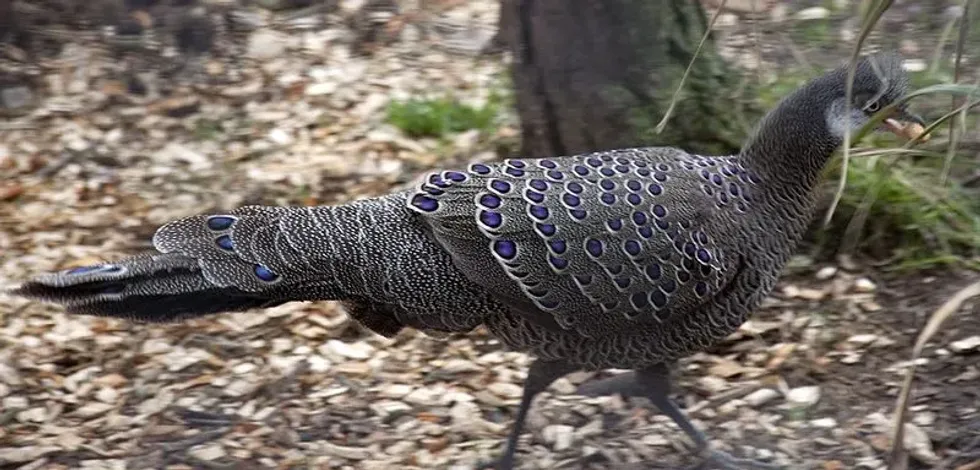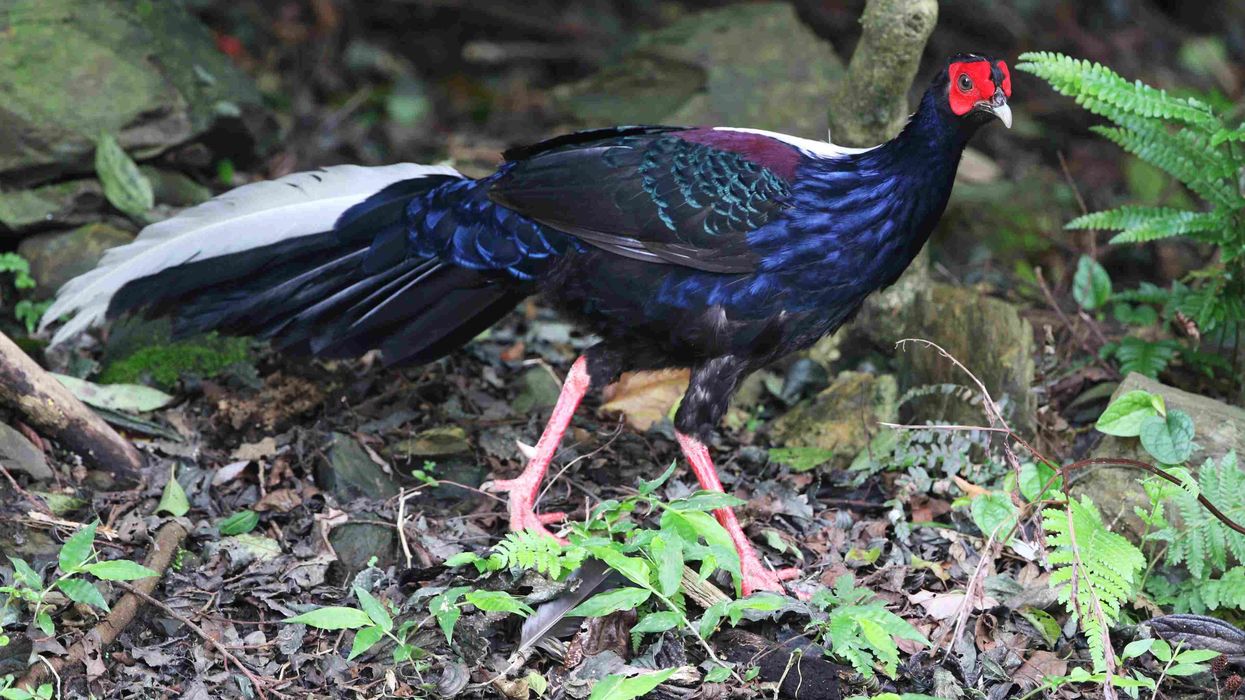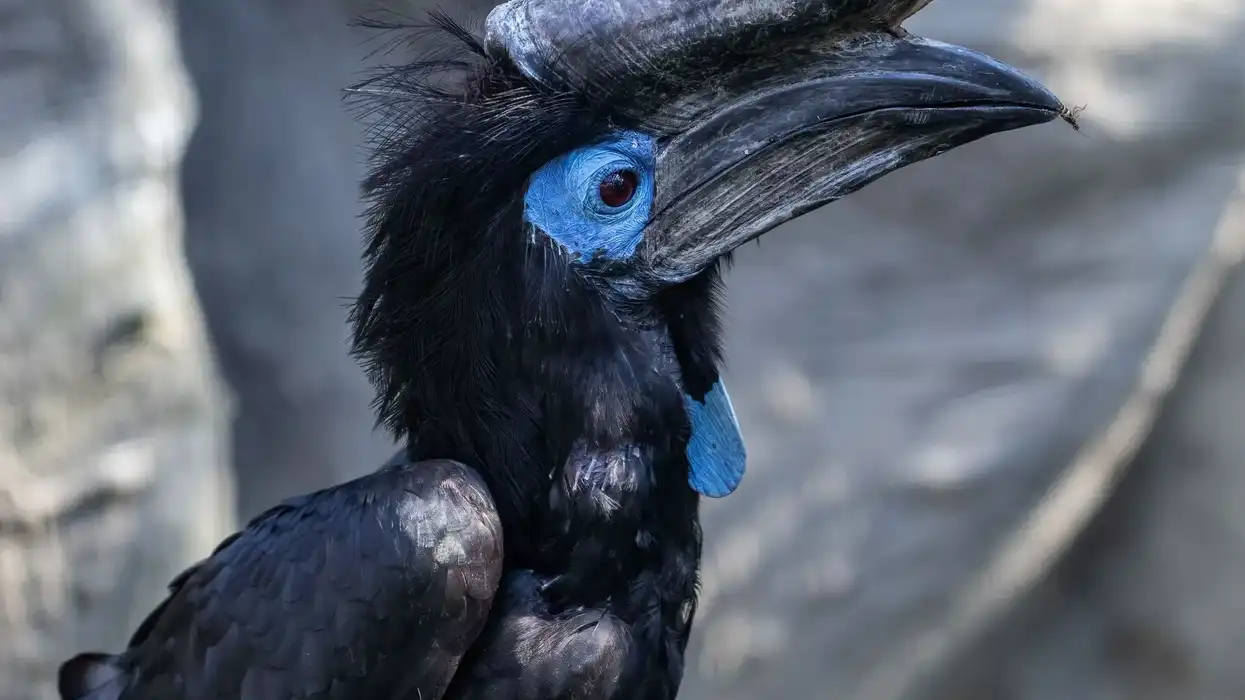The Burmese peacock (Polyplectron bicalcaratum) is a large-sized pheasant found in Asia. The bird is an Asian member of the order Galliformes. This bird is also known by the name of Burmese peacock-pheasant or gray peacock-pheasant. The species is the national bird of Myanmar. This large Southeast Asian peacock-pheasant is considered to be the smallest pheasant.
These are tropical birds and fit well into an aviary enclosure as they do not require very large aviaries. Shelter and heat should be provided during the winter months and during summer, ample shade needs to be provided to this national bird of Myanmar.
These pheasants are the most insectivorous among the group and will eat any kind of live food acceptable to their diet.
These large birds are known to inhabit dense forests found in hilly areas. The elongated gray peahen-like tail along with the green eyespots, similar to peacocks, are striking features of these birds. Males are larger than females.
Both these birds have grayish-brown plumage that is different from regular peacocks. The diet of these pheasants includes seeds, fruits, insects, and invertebrates. Like all peacocks and pheasants, the diet is similar to gray peacock-pheasants.
For more relatable content, check out these argus pheasant facts and golden pheasant facts.
Burmese Peacock Interesting Facts
What type of animal is a Burmese peacock?
The Burmese peacock is actually an Asian species of pheasant found in Southeast Asia, Bangladesh, and northeast India.
What class of animal does a Burmese peacock belong to?
The Burmese peacock (Polyplectron bicalcaratum) falls under the class of Aves in the kingdom of Animalia. The bird is part of the family Phasianidae, which also includes birds like partridges, chickens, pheasants, junglefowl, turkeys, peafowl, and Old World quail.
How many Burmese peacocks are there in the world?
The population of these birds is not quantified. However, seeing the extensive range of distribution of the species, it is estimated that the population is not under threat currently.
Their numbers are decreasing steadily but not in a range to mark the Burmese peacock-pheasant endangered. The extent of distribution of this species is spread across 1,000,004.5 sq mi (2,590,000 sq km).
Where does a Burmese peacock live?
The Burmese peacock-pheasant is found in Bangladesh, northeast India, and Southeast Asia. However, the range does not include most of the Indo China region and the Malayan Peninsula. This is not an endemic species. However, it holds an important part in Burmese culture as this species is the national bird of Myanmar.
There are four known subspecies of the Burmese peacock. The P.b. bicalcaratum is found in northeast Assam, Myanmar, southwest Thailand, and central Laos. The subspecies P.b. bailyi is found in eastern Himalayas and west Assam.
P.b. bakeri is found in northeast India and Bhutan. The subspecies P.b. ghigii is distributed across eastern Tonkin, central Laos, central and north Vietnam. It is quite rare to see these birds in the southern part of India.
What is a Burmese peacock's habitat?
The main habitat of these birds includes lowland and hill forests. Peacock-pheasants are found in dense tropical forest habitats seen up to 4265 ft (1,300 m) above sea level.
Who do Burmese peacock live with?
Pheasants are usually found in groups or flocks and are very social birds. They flock together in search of food before the winter season.
How long does a Burmese peacock live?
The lifespan of the Burmese peacock is not known. Peacocks usually are known to live for 20 years in the wild. In captivity, they can live up to 40-50 years.
Commonly, pheasants are known to live for three to 18 years.
How do they reproduce?
The breeding season of this species starts from March to June. The species is not known to be very aggressive and accepts any partner available.
The nest is made at the base of a bamboo clump. Female lays only one or two eggs in a clutch, however, many clutches per year are seen. Females continue to lay eggs if the previous ones are taken during the breeding season.
The male species do not take part in the breeding and nesting after the eggs are laid. Even without the involvement of the male species, females have been known to be excellent mothers found in the dense areas they inhabit. The clutch is incubated for 21 days.
Chicks have been found sheltering themselves in the mother's tail feathers. Mothers are known to feed the chicks for a certain period until the chicks learn to find food themselves.
What is their conservation status?
The conservation status of these peacock-pheasants is categorized as Least Concern by the IUCN Red List. The population is known to be decreasing for these animals of the genus Polyplectron.
However, they have a large range and so, there is no danger currently to this species. This bird is affected by habitat loss and these birds are easily caught in the wild for the purpose of the pet trade.
Burmese Peacock Fun Facts
What do Burmese peacocks look like?
The Burmese peacock is a large pheasant with gray-brown plumage. Like all peacocks, this bird is finely spotted with green eyespots. These spots are present on the tail feathers and the wings. Both males and females have elongated bushy crests, however, females have smaller crests than males.
Bare pink or yellow facial skin is seen on the birds. They have white throats. Gray-colored bill, iris, and legs are seen on the species.
Females are a little smaller and duller in color. Chicks look more like adult females. The name peacock-pheasant is given to this species because of the eyes or ocelli on their plumage, which is similar to other peacocks found all over the world.
How cute are they?
The beautiful plumage of these birds makes them quite cute and attractive. Thsee fascinating birds are considered to be the national birds of Myanmar for their majestic demeanor.
How do they communicate?
The birds are known to mostly communicate by voice. Their song is heard in the morning and the song is a series of ascending hoarse croaks.
How big is a Burmese peacock?
The Burmese peacock is up to 29.92 in (76 cm) long. Some pheasant species are 23.62-35.03 in (60-89 cm) long, quite similar to our species.
How fast can a Burmese peacock fly?
The speed is not known, but they are known to be able to fly. Pheasants fly at a speed of 27-38 mph (43.4-61.1 kph). They can increase their speed if in danger. Peacocks are not very fast flyers. They fly at lesser heights at a speed of around 10 mph (16 kph).
How much does a Burmese peacock weigh?
The weight of this species is around 0.88-1.98 lb (399.1–898.1 g).
What are the male and female names of the species?
Male and female Burmese peacocks are not given different names. They are known commonly by their scientific name. Generally, males are called peacocks and females are known as peahens.
What would you call a baby Burmese peacock?
Babies are known as chicks.
What do they eat?
The diet of the Burmese peacock-pheasant includes a range of food from berries, fruits, wild figs, seeds, grubs, snails, to a variety of insects and invertebrates.
Are they dangerous?
They are not considered dangerous.
Would they make a good pet?
They will not make suitable pets as they are wild animals.
Did you know...
The dancing stance of a peacock with its wings wide open is an interesting sight.
During the mating season, peacocks are known to cry and scream at night to attract peahens. They also call if some other peacock calls first.
Is a peacock a pheasant?
Peacocks and pheasants belong to the same family Phasianidae. They differ in size and color.
How smart are peacocks?
Peacocks are not considered very smart. However, some instances in their calls and behaviors have shown some cleverness in the species.
Here at Kidadl, we have carefully created lots of interesting family-friendly animal facts for everyone to discover! For more relatable content, check out these Indian peafowl facts and gouldian finch facts for kids.
You can even occupy yourself at home by coloring in one of our free printable Burmese peacock coloring pages.










